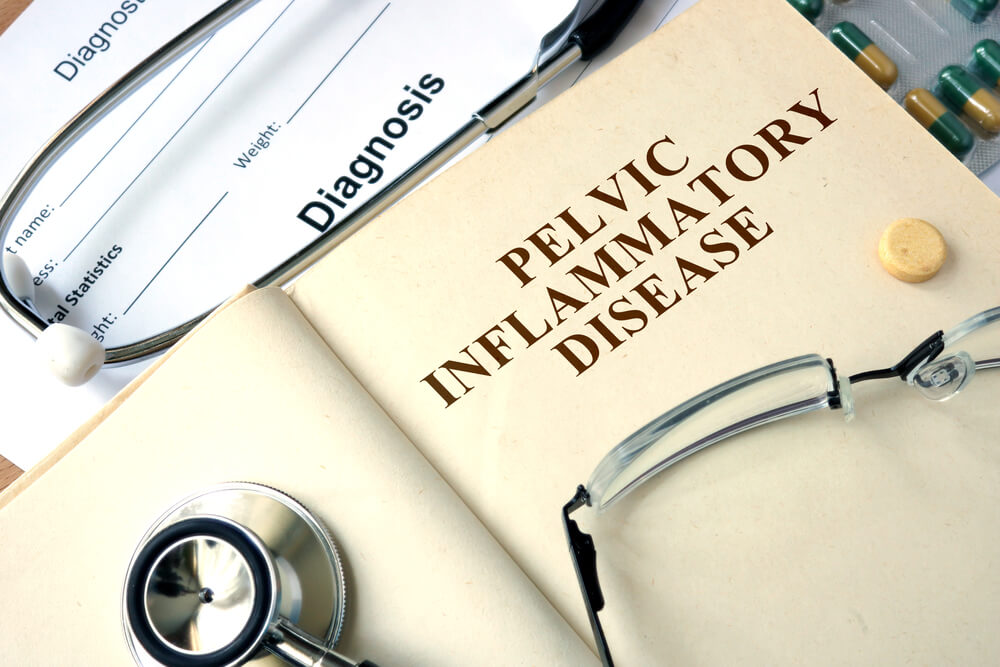What Is Pelvic Inflammatory Disease?
PID, or pelvic inflammatory disease, is a severe infection of the fallopian tubes, the uterus, or the ovaries. The disease usually occurs when specific types of bacteria spread from the vaginal area to the reproductive organs. This happens primarily because of untreated STIs or sexually transmitted diseases. Still, the bacteria can also cause pelvic inflammatory disease. Patients with the disease will often feel pain in their pelvis or abdomen and may also experience unusual leakage from their vagina. Severe cases can permanently damage a woman’s reproductive organs and may prevent her from getting pregnant.
In this article, our experts in obstetrics and gynecology in South Miami, Florida, discuss everything you need to know about pelvic inflammatory disease symptoms, the necessary preventative measures patients need to take to avoid the condition, and0 potential treatment options.
About PID
For the most part, women usually develop PID because of having unprotected sex, as intercourse can let bacteria enter the reproductive system and can potentially infect the organs.
Unfortunately, PID can be considered a relatively prevalent problem, as around one million women get the disease each year, and about 100,000 people become infertile as a result. Statistically, pelvic inflammatory disease develops most frequently in younger women between 15 and 25 years old.
Causes and Pelvic Inflammatory Disease Symptoms

In some cases, women may not even be aware that they have PID as the symptoms are unnoticeable or mild. On the other hand, some pelvic inflammatory disease symptoms may begin suddenly, and they may include the following:
- Fever or chills
- Painful intercourse
- Tenderness in the lower abdominal area or pain (this is the most common symptom)
- Yellow or green vaginal discharge with a foul odor
- Vomiting and nausea
- A burning sensation during urination
- Irregular periods
- Cramping or spotting throughout the month
The leading cause behind PID (as mentioned before) is bacteria that manage to enter the reproductive system. Usually, the bacteria pass through the vagina via the cervix, reaching the ovaries, uterus, and fallopian tubes. Typically, the cervix can stop the bacteria from spreading deeper into this area, but infection may disrupt the organ, letting the bacteria reach all the other organs.
Several bacteria types can cause pelvic inflammatory disease, but in most cases, the culprits behind the condition are chlamydia and gonorrhea – both of which spread through unprotected sex. Generally, in around 90% of cases, these two STIs are behind PID.
On the other hand, there are sporadic cases when normal bacteria reach the reproductive systems and cause PID. This usually happens in the following circumstances:
- After pelvic surgery
- After childbirth
- After a miscarriage
- After getting an IUD or intrauterine device
For the most part, women are at higher risk of developing the disease if they:
- Had that problem in the past
- Have an STI such as chlamydia or gonorrhea
- Have several sexual partners who also have many partners
- Are sexually active and below the age of 25
- Had pelvic surgery like tubal ligation
Pelvic Inflammatory Disease Complications
The longer the disease goes without treatment, the more severe it can become. For starters, the infection may form scar tissue in the fallopian tubes, which may lead to further complications such as:
- Ectopic pregnancy: The scarring can block the fertilized egg, so it can’t reach the uterus. As a result, the egg may implant inside the fallopian tubes.
- Chronic pelvic pain: Lasting pain in the pelvic area is the most prevalent complication, according to experts.
- TOA or Tubo-Ovarian Abscess: This can be defined as a pocket of infection in the pelvis that can cause extreme sickness.
- Infertility: Around ten percent of women who develop PID will experience infertility because the scar tissue prevents the fallopian tubes from releasing an egg.
Diagnosing PID
Women are encouraged to call their provider immediately after experiencing pelvic inflammatory disease symptoms. The sooner the problem gets addressed, the higher the chances are of making a successful recovery.
On that end, there’s no specific test for the disease, and as such, providers usually establish a diagnosis through the following:
- Performing a pelvic exam to take a closer look at the reproductive system and to feel for any abscesses or tenderness
- A vaginal culture test to assess the discharge for the presence of specific bacteria
- Asking the patient about their medical history, sexual activity, general health, and specific symptoms
- Blood tests
- Testing for STIs
- Ultrasound to get better images of the reproductive tract
- Urine test
In some cases, the doctor may also recommend:
- Laparoscopy, during which the provider makes a few minor cuts in the pelvis and inserts a small instrument with a light and camera to closely inspect the pelvic area.
- Endometrial biopsy, during which the expert removes a tiny tissue sample of the uterine lining and later tests it for certain diseases.
Pelvic Inflammatory Disease Treatment
Usually, your provider will prescribe a round of oral antibiotics that you should typically take for two weeks. You must take all the medicine even if you feel your symptoms subside.
Some people may still have symptoms when they take antibiotics. If this is the case, patients need to go to their provider and receive the antibiotics via IV. This may also be required in the following cases:
- If the infection is severe and the patient feels extremely sick
- If the patient is pregnant
- If there’s an abscess in the ovary or the fallopian tubes
Surgery is a rare pelvic inflammatory disease treatment, but it may help in some cases if patients still have an abscess or feel symptoms after taking antibiotics. Still, the surgical route must be discussed with the patient’s provider.
Lastly, if you are receiving pelvic inflammatory disease treatment, you should tell them your problem, as they should also be given proper STI treatment. Otherwise, PID may recur if you start having sex again.
Preventing PID

As mentioned above, there are cases when the disease develops due to normal vaginal bacteria entering the reproductive tract. In these cases, avoiding douching can lower one’s risks.
On the other hand, PID mainly occurs due to unprotected sex. On that end, practicing safe sex can help with lowering your risks. As such, consider the following:
- Limiting the number of your sexual partners
- Opting for barrier birth control methods like diaphragms and condoms
- Seeking treatment right away, both in cases when suspecting PID or STIs
- Getting regular checkups and gynecological exams
Don’t Wait If You’re Suspecting the Disease
Pelvic inflammatory disease is a severe infection of the reproductive organs usually caused by STIs like chlamydia and gonorrhea. Apart from causing problematic symptoms, untreated disease can lead to more severe problems, including ectopic pregnancies and infertility.
Fortunately, women can significantly lower the risk of infection by practicing safe sex and by limiting their number of sexual partners.
And even if a woman has developed the disease, her healthcare provider can treat the problem with antibiotics. Receiving early treatment is a critical factor regarding PID, so women are encouraged to reach out to their providers if they are experiencing any symptoms.
That said, if you would like to learn more about treatment options or the infection itself, feel free to contact our experts today.


